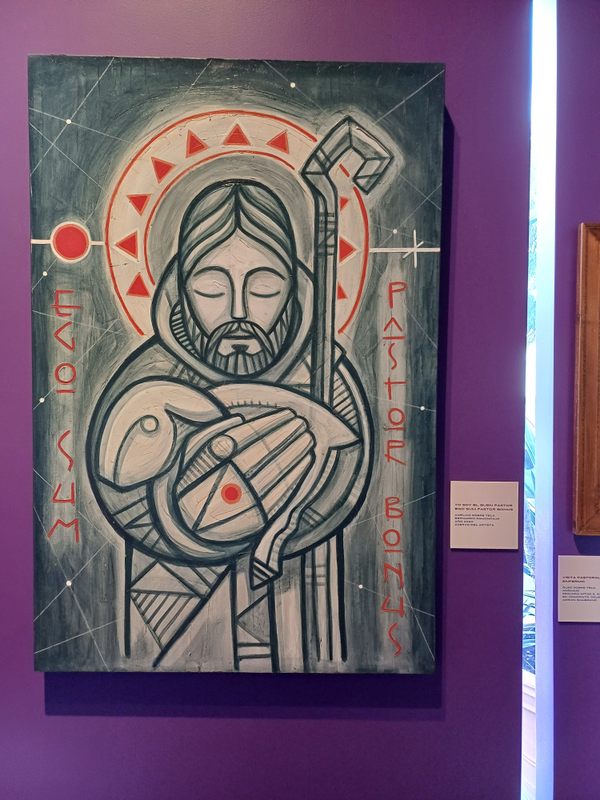Christianity, especially Roman Catholicism, has a legacy of patronage, resulting in artistic works like the Book of Kells, Michelangelo’s Sistine Chapel ceiling, and Andrei Rublev’s icons, among others. As European colonialism expanded, these artistic practices spread alongside Christianity.
In Mexico, as the colony of New Spain, art became a powerful tool in the conversion of indigenous peoples to Christianity. Local gods were assigned to equivalent saints; churches were built atop the ruins of temples and objects of worship; indigenous art styles were only allowed to survive in service of Catholicism. As the colony became more Europeanized, religious art followed the Baroque, Churrigueresque, and other popular styles (mostly from Spain). The art of what would later become Mexico amassed a large number of both local and imported crucifixes, biblical paintings, and fancifully carved church items like altarpieces, pulpits, and confessionals.
In the art museum of the Archdiocese of Monterrey, many such objects can be found, especially those that came from churches in what is now Nuevo León. The displays begin with works from the Colonial period, mostly the 18th and early 19th centuries. Most are paintings, though carvings and furniture also appear. Following Mexico’s independence in 1821, the collection includes vestments, thuribles, and artworks made by priests, novices, and other clergy.
Secular artistic trends are often reflected in religious items as well. Works from the late 20th and 21st centuries sometimes show modernist influences and even abstraction in depictions of the crucifixion or the Holy Trinity. The museum also includes a significant library, the bulk of which was donated in 2015 by the Monterrey Institute of Technology and Higher Education (ITESM). It was inaugurated in 2020 during the COVID-19 lockdowns and named in honor of Monsignor Francisco Plancarte y Navarrete, Archbishop of Monterrey from 1912 to 1920.


